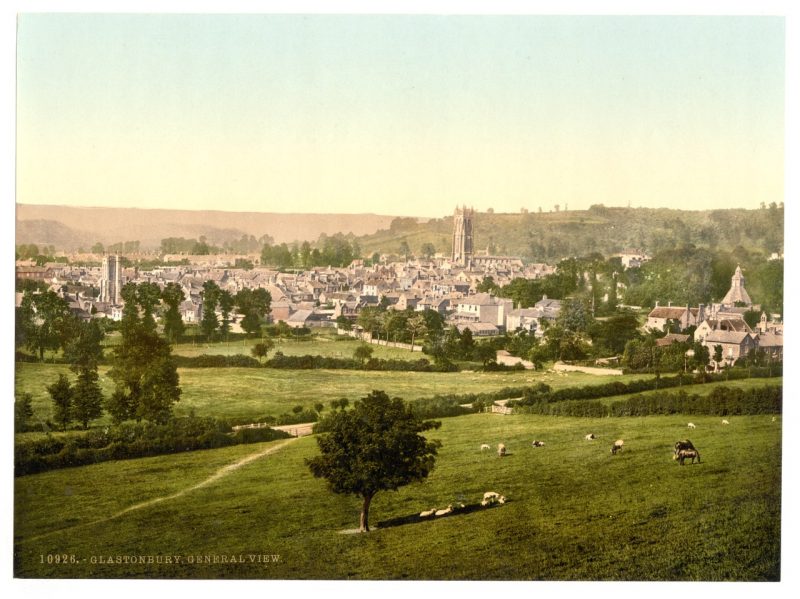In May 2016, a team of archaeologists from the South West Heritage Trust was excavating a site at the Beckery Chapel on an island near Glastonbury.
The area was first identified in the 1880s, and excavations of the cemetery around the ancient chapel started in the 1960s, during which the first 50 graves were unearthed.
The age of the remains found at Beckery indicates that this site is the oldest example of monastic life uncovered thus far in Great Britain. It predates such eminent places as Iona Abbey in Scotland, which has been dated to the late 6th century AD, and the nearby Glastonbury Abbey, which has been dated to the 7th century. Burials at Beckery date from the early 5th century AD to as late as the 9th century AD. The last of the burials appears to coincide with the arrival of the Vikings to the British Isles.
Human remains excavated at Beckery Chapel may constitute the earliest evidence of monasticism in England https://t.co/pA2vuKfxR7 pic.twitter.com/xHCfZNOl9E
— Archaeology Magazine (@archaeologymag) December 9, 2016
The word Beckery, in Old English, means “Bee Keepers Island”, and in Old Irish it means “Little Ireland.” This small monastery had been built on an island within the wetlands that surround Glastonbury.
It would have been cut off from the outside world by the soggy terrain that surrounded it, so the small number of monks that lived there would have lived in near isolation. It seems that the monastery was built with wattle and daub; none of the buildings were of a grand nature nor built with stone.
Beckery Chapel near Glastonbury ‘earliest known UK monastic life’ – BBC News https://t.co/UE7AD8MBts #genealogy pic.twitter.com/VboqW8eQj5
— David Allen Lambert (@DLGenealogist) December 6, 2016
Of the 60 or so skeletons found in the graveyard at the old monastery, only one has proven to be female, lending further credence to the idea that this was the site of an ancient hermitage. The one female skeleton is presumed to have been that of a visiting nun. Of the other skeletons, only two are of young men, with all the rest belonging to mature males.
The interpretation of the presence of the two young men is that they were most likely novices.
The bones indicate that the men undertook strenuous work and did not spend their days on their knees in prayer. One skeleton showed that the man had broken his forearm; it was not properly set, so it healed poorly. Analysis of the bones indicates that some of the men had eaten more dairy and meat than others, giving rise to the theory that they had arrived at the monastery after being raised elsewhere.
Beckery Chapel near #Glastonbury ‘earliest known #UK monastic life’. https://t.co/GcQWy1oIZd pic.twitter.com/SFLwEQ8O3W
— Ancient History (@ahencyclopedia) December 6, 2016
The ancient origins of the monastery have given rise to two legends associated with it. The first concerns the famous King Arthur, who is supposed to have had a vision of the Virgin Mary holding the baby Jesus while he was at the Abbey. In the vision, the Virgin Mary is supposed to have given King Arthur a crystal cross with four equal arms; this encouraged him to change his coat of arms. He replaced the red dragon on his coat of arms with the crystal cross, along with an image of the Virgin and Child. There are many variations on this legend, but they all assume that King Arthur existed and is not himself a legend! These variations include visions of Mary Magdalene instead of the Virgin, the king visiting the elderly priests for advice, and the king visiting the monastery in preparation for battle – most notably, the Battle of Badon, Mail Online reported.
The second legend concerns St. Brigid of Ireland, who, according to manuscripts dated to the 15th century, visited Beckery in 488 and left religious relics with the monks. Historians are of the opinion that the story of St. Brigid has been merged with that of an Irish goddess of the same name, whose feast day was celebrated, in Gaelic times, as the date that marked the beginning of spring. This coincides with St. Brigid’s feast day – February 1st.
Neither of these legends can be authenticated, but that does not detract from the discovery of the skeletons of these ancient holy men. The research at Beckery Chapel has given us a peek into the lives of monks that lived in the British Isles 1,500 years ago – in late Roman or early Saxon times.
